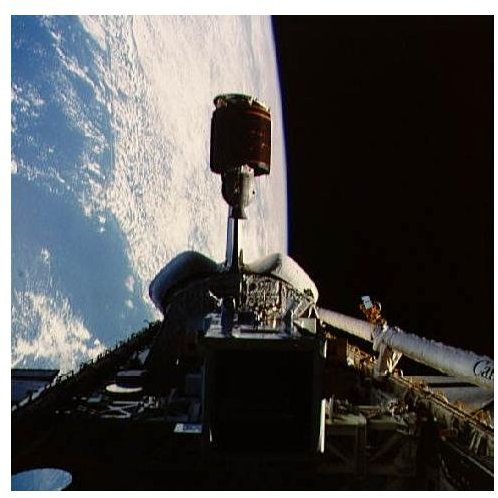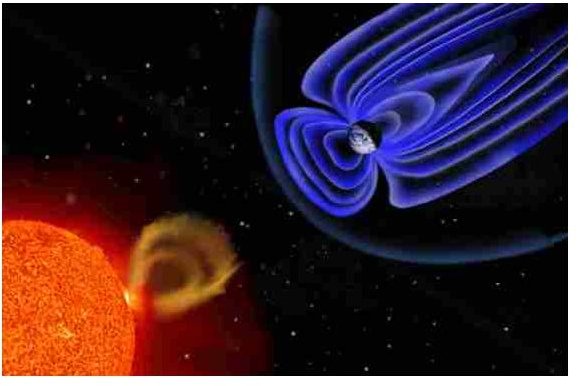What Causes Space Weather? How Space Weather Affects Life and Technology on Earth
Is the Sun to Blame for Changes in Space Weather?
The Sun is a factor factor for space weather but space weather involves changes in radiation, magnetic fields, solar wind (which is a stream of charged particles, or plasma, flowing from the sun) and other conditions in our solar system beyond Earth’s atmosphere. More specifically, space weather means how those changes affect life and technology on our planet.
There is one big similarity, though, between space weather and weather here on Earth: both are driven primarily by the sun.
Solar Wind, Solar Flares, and Coronal Mass Injections
That giant engine of nuclear fusion that brings us light and heat is also a powerful, ever-changing and sometimes volatile source of solar wind, solar flares and coronal mass ejections. All three of these phenomena have far-ranging impacts, occasionally causing dramatic effects on our planet.
While the solar wind is always “blowing,” so to speak, it doesn’t do so at constant speed. Some streams of the wind flow faster than others, causing variations in plasma densities across space. As the solar wind rushes toward Earth, it interacts with our planet’s magnetic field; dramatic changes in solar wind patterns can generate geomagnetic storms.
And what would cause solar wind to change dramatically? Solar flares, which are sudden explosions of energy, radiation and plasma that can last from a minute to a few hours, and coronal mass ejections, which are large bursts of magnetized plasma. Sometimes associated with solar flares, coronal mass ejections make their impact felt on Earth some two to six days after blasting from the sun.

Above left: A depiction of how solar wind affects Earth’s magnetosphere (Image credit: https://commons.wikimedia.org_/wiki/Image:Solar_wind.jpg)_
Right: A coronal mass ejection (Image credit: NOAA, https://commons.wikimedia.org/wiki/Image:Mass_eject.png)
Other Causes of Space Weather
Sun spots can also affect space weather. These dark splotches with strong magnetic fields appear more or less frequently on an 11-year cycles, and they’re often associated with solar flares. When sun spots are at a maximum, their impact on Earth is too.
Coronal holes are another driver of changing space weather. Large areas on the sun visible by x-ray, these holes appear in a cyclical manner and create conditions that let high-speed solar winds flow continuously from those areas.
Galactic cosmic rays interact with our atmosphere to form the Earth’s inner and outer radiation belts. As solar wind patterns change, so too do conditions in these radiation belts, another form of space weather.
Impacts on Earth and Technology

So how exactly does space weather affect life on Earth? Changes won’t make you want to dress in layers or remember to bring an umbrella, but they could have you occasionally relying on flashlights and paper maps instead of electric lighting and GPS.
One sign of active space weather comes to us in the form of the aurora, those colorful and delicate dancing lights most common in the skies over the polar regions. Auroras are the visual evidence of geomagnetic storms, when solar winds energize particles in Earth’s magnetosphere, eventually causing some particles to collide with atmospheric molecules that give off light in response. Really powerful geomagnetic storms can bring the aurora to regions that don’t normally see them, as happened in Singapore in 1909.
Communications systems that rely on high-frequency signals that bounce off the ionosphere can fall victim to volatile space weather. While ionospheric storms don’t typically bother commercial radio and television broadcasts, they can wreak havoc with ham-radio signals, Voice of America broadcasts, ship-to-shore communications and some military systems.
Satellite operations can also take a hit during geomagnetic storms, affecting everything from cell phones to ATMs. The interruptions are typically temporary, but sometimes not, as AT&T learned when a coronal mass ejection in 1997 killed its $200 million Telstar 401 satellite.
Scarier still is space weather’s potential impact on navigation systems. The systems used by airlines, shipping operators and – increasingly – even GPS-equipped individuals can start spitting out inaccurate data during geomagnetic storms. Planes flying over the poles can be especially vulnerable, and flights in those regions sometimes have to be diverted to ensure accurate and continuous communications.
Because magnetism affects electricity and vice versa, geomagnetic storms can also mess with power grids. Stormy conditions tend to induce direct currents in transmission lines that rely on alternating currents, which can sometimes cause power outages on a large scale. One particularly powerful geomagnetic storm on March 13, 1989, caused millions of people in Montreal – as well as others in the U.S. and Sweden – to lose power for up to nine hours.
Changes in space weather has many other impacts, too: it can interfere with magnetic surveying used in oil exploration, complicate pipeline operations, affect climate patterns, destroy atmospheric ozone and even create problems for migratory animals that rely partly on magnetic fields to navigate.
Above left: A communications satellite orbiting Earth (Image credit: NASA, https://commons.wikimedia.org/wiki/Image:S

TS_-51-G_Telstar_3-D_deployment.jpg)_
Right: Geomagnetic storms can cause widespread blackouts similar to the one pictured here (though the 2003 U.S./Canada blackout was not space weather-related) (Image credit: Camerafiend at Wikimedia Commons under a GNU Free Documentation license, https://commons.wikimedia.org/wiki/Image:Toronto_ON_2003_Blackout.jpg)
Additional Resources
NOAA’s Space Weather Prediction Center (SWPC): https://www.swpc.noaa.gov/index.html
NOAA/SWPC Primer on Space Weather: https://www.swpc.noaa.gov/primer/primer.html
European Space Agency’s Space Weather Site: https://esa-spaceweather.net/
